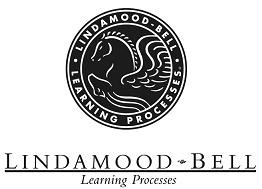
Methodology
Dyslexia is a language based learning difference. These students must receive instruction in the way they learn. The teachers must be trained and skilled in literacy and appropriate method.
"School districts should be expected to employ 'best practice', including research-based reading instruction methodologies that cover the five components of effective instruction: phonemic awareness, phonics, fluency, vocabulary and comprehension. Instruction should be systematic and sequential, and should be delivered in a multi-sensory fashion." - Dyslexia Association
The Association Method
The Association Method is a multi-sensory, phonetically based, systematic, incremental instructional program for teaching and/or refining oral and written language. Special features are: multi-sensory teaching which includes the use of auditory, visual, tactile and motor-kinesthetic cues for learning; use of the Northampton Symbol system for teaching sound/symbol relationships for reading; use of cursive writing for initial instruction-children learn to read manuscript, but write only in cursive; a slower temporal rate of speech is used to provide children more time to process auditorily and more time to observe the speaker's lip movements; precise articulation is required from the beginning; and color differentiation is used as an attention-getter, to differentiate phonemes within words, and to highlight verbs and new concepts in language structures. An individual child's book is made as he/she progresses through the Method. For more information contact The DuBard School for Language Disorders, University of Southern Mississippi, Box 10035, Hattisburg, MS 39406-0035. Phone 601/266-5223.
Take Flight
Take Flight evolved directly from Orton-Gillingham. It combines all three learning modalities (auditory for spelling; visual for reading; kinesthetic for handwriting). The "Instant Spelling Deck" for daily 3-minute drill focuses on the most probable spelling of each of the forty-four speech sounds. The Initial Reading Deck is a set of 98 cards with 3D pictured key words (chosen by students) to "unlock" each of the 44 speech sounds. Bench Mark Measures geared exactly to the curriculum were added to provide periodic proof of students' progress in reading, spelling, handwriting, and alphabetizing-designed both to guide the teachers' presentation pace and to enhance the student's confidence. For more information contact the Texas Scottish Rite Hospital, 2222 Welborn St., Dallas, TX 75219. Phone 214/559-7425.
Lindamood-Bell
The Lindamood® Phonemic Sequencing (LiPS) Program (formerly called the ADD Program, Auditory Discrimination in Depth) successfully stimulates phonemic awareness. Individuals become aware of the mouth actions which produce speech sounds. This awareness becomes the means of verifying sounds within words and enables individuals to become self-correcting in reading and spelling, and speech. The Visualizing and Verbalizing for Language Comprehension and Thinking (V/V) program develops concept imagery through a series of steps beginning with expressive language and extending from a word to imaged paragraphs. For more information contact Lindamood-Bell Learning Process, 416 Higuera, San Luis Obispo, CA 93401. Phone 800/233-1819.
Wilson
The Wilson Reading System is a 12-Step remedial reading and writing program for individuals with a language-based learning disability. This program is based on Orton-Gillingham philosophy and principles and current phonological coding research. It directly teaches the structure of words in the English language so that students master the coding system for reading and spelling. Unlike other programs that overwhelm the student with rules, the language system of English is presented in a very systematic and cumulative manner so that it is manageable. The Wilson Reading System specifically teaches strategies for decoding and spelling. However, from the beginning steps of the program, it includes oral expressive language development and comprehension. Visualization techniques are used for comprehension. For more information contact Wilson Language Training, 175 West Main Street, Millbury, MA 01527-1441. Phone 800/899-8454.
Barton
The Barton Reading and Spelling System is a ten level Orton-Gillingham influenced, multi-sensory explicit and systematic program designed specifically for those with dyslexia. The Barton system uses one-on-one instruction methods to greatly improve spelling, reading, and writing skills. At an affordable price, parents can learn to become tutors for their own children or others. For more information contact Susan Barton, 2059 Camden Ave. Suite 186 San Jose, CA 95124, 408/599-3652.
Math-U-See
Our goal is to help produce confident problem solvers who enjoy the study of math. The reason we study math is so we can apply what we learn in everyday situations. The students learn their math facts, rules, and formulas, and are able to use this knowledge in real life applications. The study of math is much more than committing a list of facts to memory. It includes memorization, but it also encompasses learning the concepts that are critical to problem solving.
Descriptions of some MSSL reading programs; From the original Orton-Gillingham approach, many variations have been developed. Some of the modified Orton-Gillingham written by Orton students are The Slingerland Method, The Spalding Method, Project Read, Take Flight Method, The Herman Method, and The Wilson Method. Other works included in which the authors of the programs used the tenets of Orton's work, but were not directly trained by Orton-Gillingham personnel are The Alphabetic- Phonetic- Structural -Linguistic approach to Literacy (Shedd), Sequential English Education (Pickering), and Starting Over (Knight). The Association Method (DuBard), and the Lindamood-Bell Method (Lindamood -Bell) have as their basis the research into hearing impaired and the language impaired individuals.








